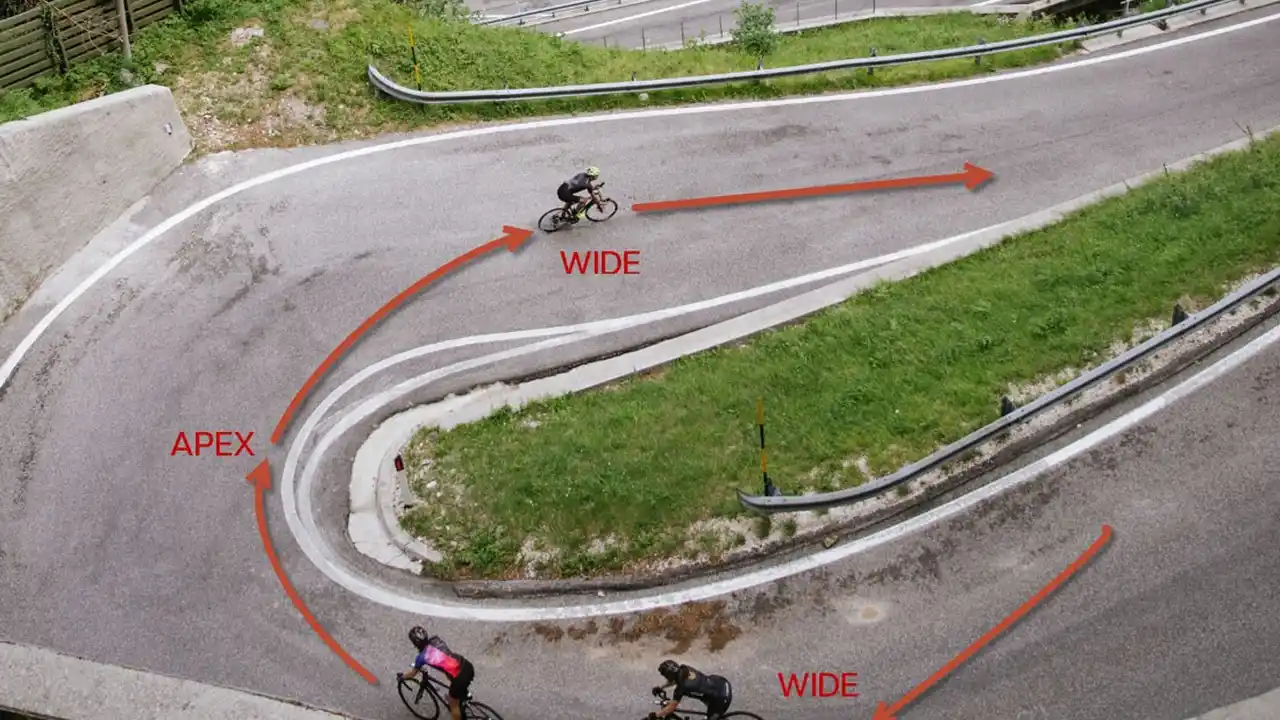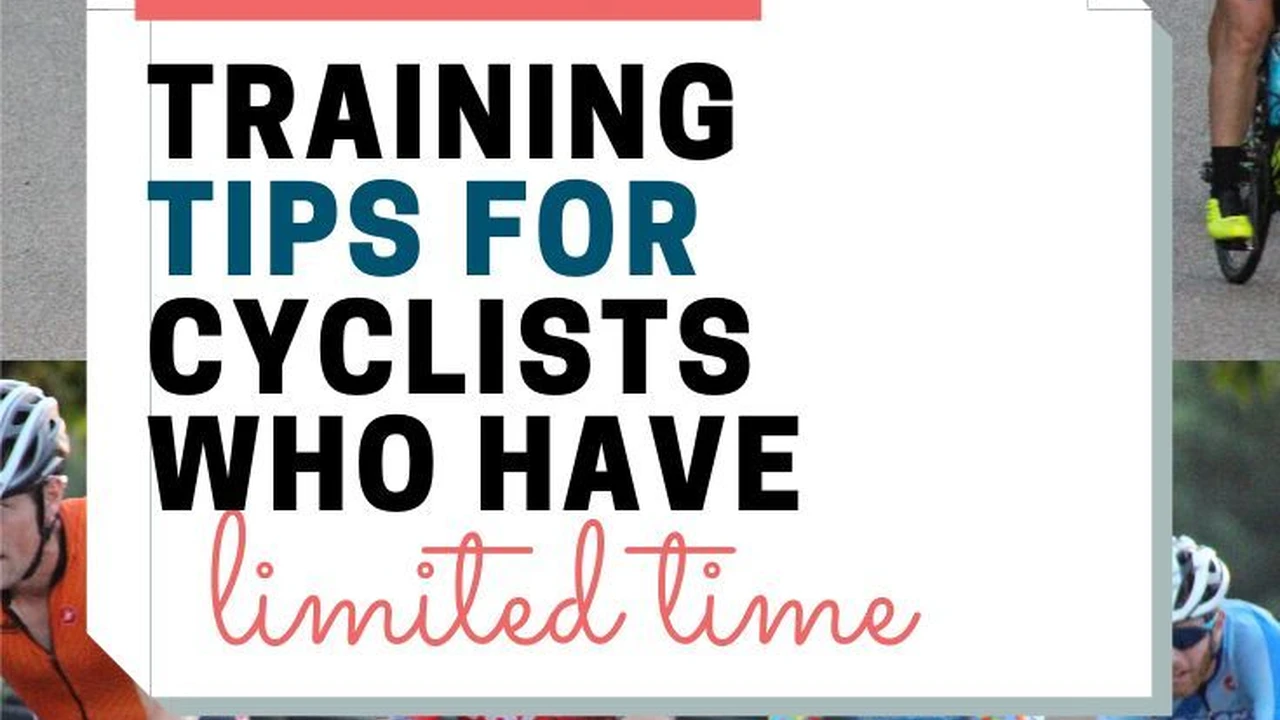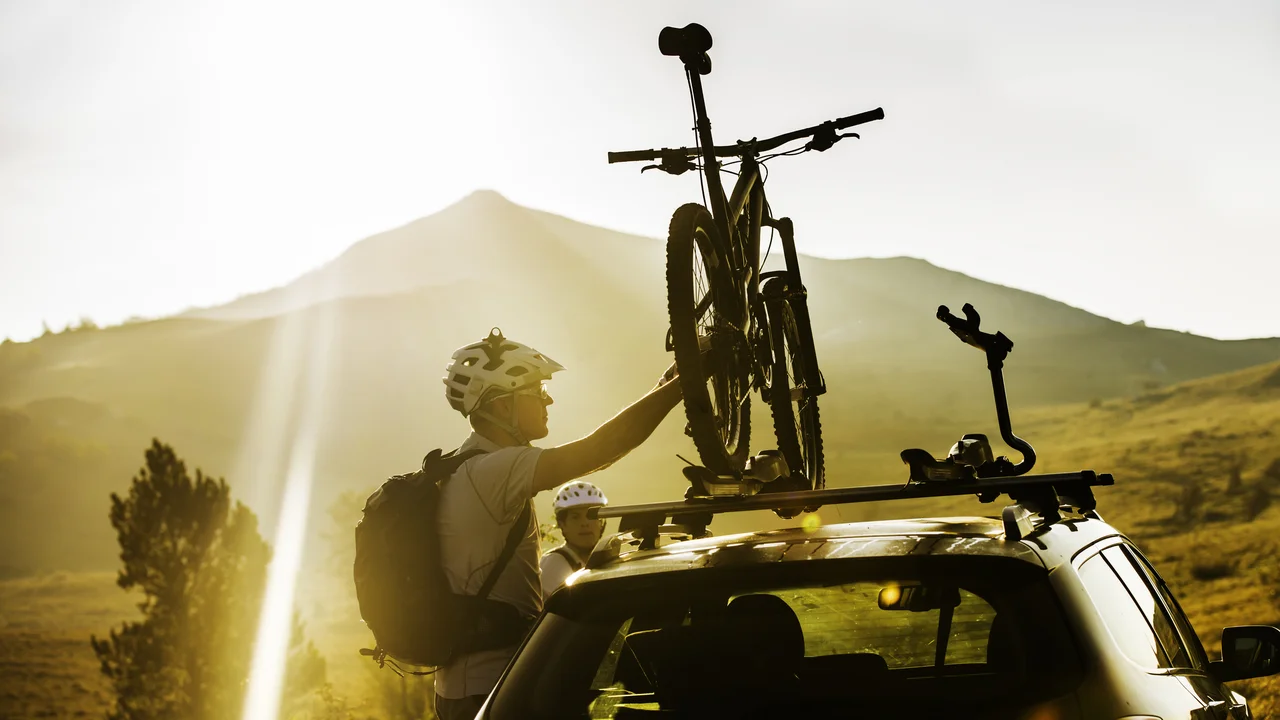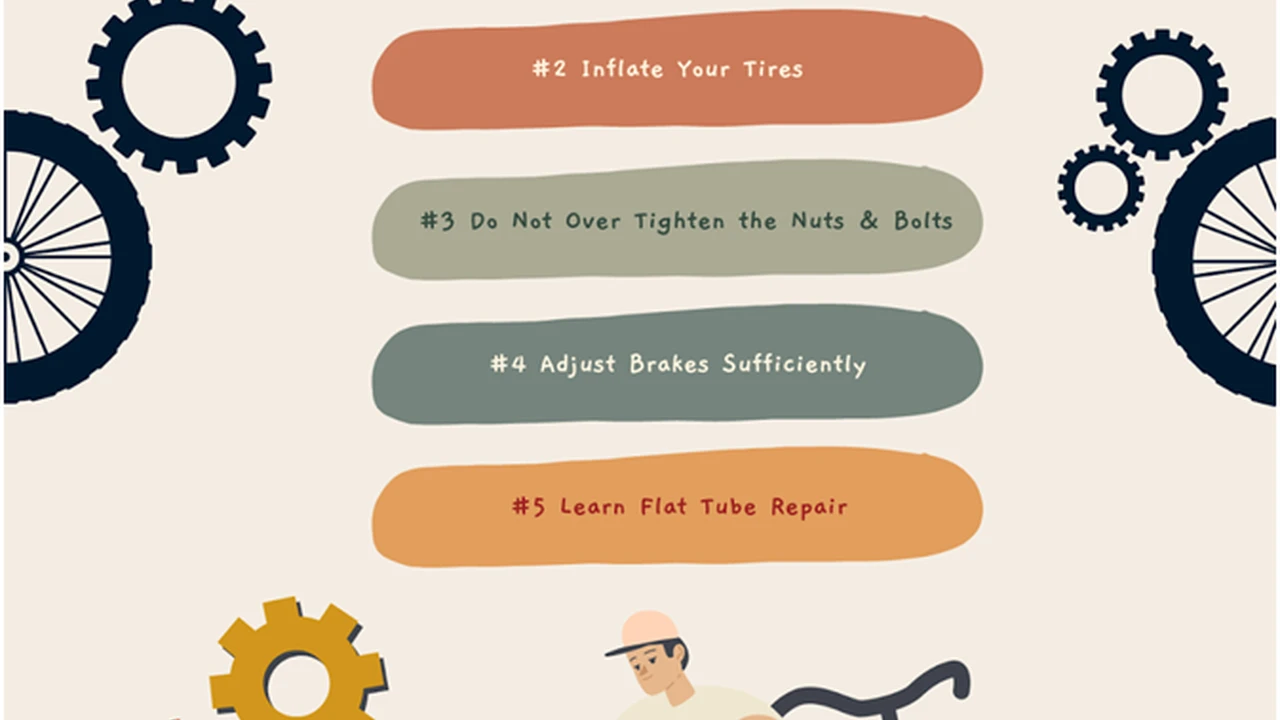Cornering Techniques for Road Cyclists
Cornering is one of the most crucial skills for any road cyclist, impacting speed, safety, and overall enjoyment. Mastering cornering techniques allows you to maintain momentum, navigate challenging bends with confidence, and ultimately become a more efficient and skilled rider. This article delves into the essential cornering techniques for road cyclists, covering everything from body positioning and line selection to equipment recommendations and real-world scenarios. Get ready to sharpen your cornering skills and take your road cycling to the next level!

Understanding the Basics of Cornering for Road Cycling: Body Position and Balance
Before diving into advanced techniques, let's solidify the fundamentals. The key to effective cornering lies in maintaining balance and control. This starts with proper body positioning. Think of yourself as one with the bike, working together to navigate the turn. Here's a breakdown:
- Lower Your Center of Gravity: This is crucial for stability. As you approach the corner, lower your body by bending your elbows and knees. This brings your center of gravity closer to the ground, making you less likely to tip over.
- Outside Pedal Down: Place your weight on the outside pedal of the turn. This helps to counteract the centrifugal force pushing you outwards. Imagine pushing down through that pedal.
- Inside Arm Bent, Outside Arm Straight: This helps you steer and maintain balance. Keep your inside arm bent and your outside arm straight, applying gentle pressure to the handlebars.
- Look Through the Turn: This is perhaps the most important aspect. Focus your eyes on where you want to go, not on the obstacle in front of you. Your body will naturally follow your gaze.
Practice these basics in a safe, controlled environment, like an empty parking lot or a quiet road. Get comfortable with the feeling of leaning into the turn and trusting your tires.
Line Selection: Optimizing Your Path Through the Corner for Road Cyclists
Choosing the right line through a corner can significantly impact your speed and safety. The ideal line is usually the one that allows you to maintain the most speed and the smoothest arc. Here's how to approach line selection:
- Wide Entry, Apex, Wide Exit: This is the classic racing line. Enter the corner wide, clip the apex (the innermost point of the turn), and exit wide. This allows for a smoother, more gradual turn.
- Consider the Road Conditions: Look for potholes, gravel, or other hazards that might affect your line. Adjust your line accordingly to avoid these obstacles.
- Anticipate Traffic: Be aware of other vehicles and cyclists. Choose a line that gives you enough space to react to unexpected situations.
- Practice Makes Perfect: Experiment with different lines to see what works best for you. Pay attention to how the bike feels and how much speed you're able to maintain.
Remember, line selection is not just about speed. It's also about safety. Choose a line that minimizes your risk of crashing or colliding with other road users.
Advanced Cornering Techniques: Countersteering and Weight Shifting for Road Cycling Performance
Once you've mastered the basics, you can start exploring more advanced cornering techniques. These techniques can help you navigate tighter corners, maintain higher speeds, and improve your overall handling skills.
- Countersteering: This is a subtle but powerful technique. To initiate a turn, gently push the handlebar in the opposite direction of the turn. This might sound counterintuitive, but it's what allows you to lean the bike into the corner. At higher speeds, countersteering becomes more instinctive.
- Weight Shifting: Shifting your weight can help you maintain balance and control in the corner. Try shifting your weight slightly towards the outside of the turn. This helps to counteract the centrifugal force and keep your tires planted on the ground.
- Trail Braking: This technique involves lightly applying the brakes as you enter the corner. This helps to settle the bike and improve traction. Be careful not to brake too hard, as this can cause you to lose control.
These techniques require practice and a good understanding of your bike's handling characteristics. Start slowly and gradually increase your speed as you become more comfortable.
Gear Recommendations for Enhanced Cornering: Tires, Handlebars, and Road Cycling Shoes
Your equipment can also play a significant role in your cornering performance. Choosing the right tires, handlebars, and shoes can give you more confidence and control in the corners.
Tires: Grip and Rolling Resistance for Optimal Road Cycling Cornering
Tires are arguably the most important piece of equipment when it comes to cornering. Look for tires with good grip and low rolling resistance. Some popular options include:
- Continental Grand Prix 5000: These tires offer excellent grip, low rolling resistance, and good puncture protection. They are a popular choice for both racing and training. Price: $70-80 per tire.
- Vittoria Corsa: These tires are known for their exceptional grip and supple ride. They are a good choice for riders who prioritize comfort and performance. Price: $80-90 per tire.
- Schwalbe Pro One: These tires offer a good balance of grip, rolling resistance, and durability. They are a versatile option for a variety of riding conditions. Price: $60-70 per tire.
Scenario: Imagine you're descending a winding mountain road. The Continental Grand Prix 5000 tires would provide the confidence and grip you need to tackle the corners at speed. The Vittoria Corsa tires would offer a smoother ride and better comfort on rougher surfaces. The Schwalbe Pro One tires would be a good all-around option for mixed conditions.
Handlebars: Width and Drop for Improved Road Cycling Handling
The width and shape of your handlebars can also affect your cornering ability. Wider handlebars can provide more leverage and control, while a deeper drop can help you get lower and more aerodynamic.
- Compact Handlebars: These handlebars have a shorter reach and drop, making them more comfortable for riders with smaller hands or less flexibility. Brands like Specialized and Zipp offer excellent compact options. Price: $100-300.
- Aero Handlebars: These handlebars are designed to reduce aerodynamic drag. They often have a flatter top section and a more aggressive drop. Enve and Vision offer high-performance aero handlebars. Price: $200-500.
- Endurance Handlebars: These handlebars are designed for comfort and long-distance riding. They typically have a more relaxed geometry and vibration-damping features. Salsa and Ritchey offer durable and comfortable endurance handlebars. Price: $80-200.
Scenario: If you're racing, aero handlebars would be a good choice to minimize drag. For long-distance rides, endurance handlebars would provide more comfort and reduce fatigue. Compact handlebars would be ideal for riders with smaller hands or those who prefer a more upright position.
Road Cycling Shoes: Stiffness and Fit for Efficient Power Transfer
Stiff-soled shoes are essential for efficient power transfer and improved cornering. Look for shoes with a carbon fiber sole and a secure fit.
- Shimano S-Phyre RC9: These shoes are known for their exceptional stiffness and comfort. They are a popular choice among professional cyclists. Price: $400-500.
- Specialized S-Works Torch: These shoes offer a great balance of stiffness, comfort, and weight. They are a versatile option for a variety of riders. Price: $350-450.
- Bontrager XXX Road Shoes: These shoes are known for their lightweight design and excellent fit. They are a good choice for riders who prioritize performance and comfort. Price: $300-400.
Scenario: Stiff shoes like the Shimano S-Phyre RC9 transfer more power to the pedals, resulting in better acceleration out of corners. A secure fit, like that offered by the Specialized S-Works Torch, prevents foot slippage and improves control. Lightweight shoes, such as the Bontrager XXX Road Shoes, reduce overall weight and improve climbing performance.
Cornering in Different Conditions: Wet Roads, Gravel, and Descending Techniques for Road Cyclists
Cornering techniques need to be adapted to different road conditions. Wet roads, gravel, and steep descents all require a slightly different approach.
Cornering on Wet Roads: Maintaining Traction and Avoiding Skidding
Wet roads are notoriously slippery. To maintain traction and avoid skidding, follow these tips:
- Lower Tire Pressure: Lowering your tire pressure slightly can increase the contact patch between the tire and the road, improving grip.
- Smooth and Gradual Movements: Avoid sudden changes in direction or braking. Make smooth, gradual movements to maintain control.
- Look Further Ahead: Anticipate hazards and adjust your line accordingly.
- Use Your Brakes Sparingly: Brake gently and progressively. Avoid locking up your wheels.
Cornering on Gravel: Maintaining Control and Avoiding Slides
Gravel roads present a different set of challenges. The loose surface can make it difficult to maintain control and avoid slides.
- Shift Your Weight Back: Shifting your weight back can help to improve traction and prevent the front wheel from washing out.
- Use a Wider Tire: Wider tires provide more contact area and better grip on loose surfaces.
- Relax Your Grip: A tense grip can make it more difficult to control the bike. Relax your grip and let the bike move underneath you.
- Be Prepared to Drift: On gravel, it's often necessary to drift slightly through the corners. Be prepared to adjust your steering to maintain control.
Descending Techniques: Maintaining Speed and Control on Steep Roads for Road Cyclists
Descending steep roads can be exhilarating, but it's also important to maintain control and avoid crashing.
- Keep Your Weight Back: Shifting your weight back helps to prevent the front wheel from lifting off the ground.
- Use Your Brakes Judiciously: Brake gently and progressively. Avoid locking up your wheels.
- Look Ahead: Scan the road for hazards and anticipate turns.
- Use Your Body to Steer: Lean into the turn and use your body weight to help steer the bike.
Real-World Scenarios: Applying Cornering Techniques in Different Road Cycling Situations
Let's look at some real-world scenarios and how to apply the cornering techniques we've discussed.
Scenario 1: A Tight Hairpin Turn on a Mountain Climb
In this situation, you'll need to slow down significantly before entering the turn. Choose a wide entry and clip the apex. Use your brakes lightly to maintain control and shift your weight towards the outside of the turn. Be prepared to use countersteering to initiate the turn.
Scenario 2: A Sweeping Corner on a Flat Road
In this situation, you can maintain more speed. Choose a wide entry and exit, and use a smooth, gradual line. Shift your weight slightly towards the outside of the turn and look through the corner. You may not need to use your brakes at all.
Scenario 3: Cornering in a Group Ride
When cornering in a group, it's important to be aware of your surroundings and communicate with your fellow riders. Maintain a safe distance from the rider in front of you and signal your intentions clearly. Avoid sudden movements and be prepared to adjust your line to avoid collisions.
:max_bytes(150000):strip_icc()/277019-baked-pork-chops-with-cream-of-mushroom-soup-DDMFS-beauty-4x3-BG-7505-5762b731cf30447d9cbbbbbf387beafa.jpg)





